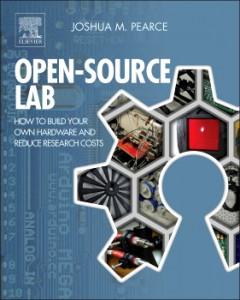
Part of the energy savings comes from lowering what is known as the embodied energy of the process. This means the resources that are put into the recycling process that aren’t necessarily included in just the moments when the recycling is occurring, in this case during sorting and transportation of the material. By recycling the milk jugs in your home, you eliminate transportation costs and greatly reduce the energy expended on sorting (as you can now just have an extra bin for the containers).
What makes this particularly enticing is the long term cost savings, especially if you are a regular purchaser of filament. While commercially available filament can cost anywhere between $36 and $50 a kilo, the recycled plastic filament can be produced for approximately 10 cents per kilo. This represents a discount of over 99.7%. HDPE plastic isn’t perfect, there is some shrinkage as the plastic cools but for making small objects at a local scale, the impact is negligible.
So what is involved, in becoming your own recycling center / filament producer?
The first step is to drink milk for strong bones…or, at least, to collect the jugs that the milk came in and to give them a good cleaning. The jugs can then be opened, flattened, and run through an office shredder. After shredding, the material becomes the feedstock for a post-consumer waste plastic extruder, such as the RecycleBot, also developed by Dr. Pearce. To continue the open-source and self-directed nature of the process, the team from MTU recommends printing the filament using a RepRap self-replicating rapid prototyper.
While often it seems as though the discourse surrounding sustainability is one that advocates giving up high tech and using only natural materials, it’s nearly impossible to imagine that technological advances will be voluntarily ‘un-learned.’ This study in materials science makes it clear that doing so is not the only way to think about the problems of production and consumption. The home recycling process discussed in the article published by the research team in the Journal of Cleaner Production is just one part of a larger group of initiatives such as the Ethical Filament Foundation’s program to help trash collectors in developing countries turn the plastics they find into filament they can sell.
You don’t have to give up high tech to contribute to a healthier, cleaner world. In fact, Dr. Pearce notes, “3D printing can…potentially change the water shortage in developing countries and solve the food crisis in many areas.”
Now all you need is a superhero costume. Let us know your opinion of this story in the Milk Container to 3D printer filament forum thread on 3DPB.com.